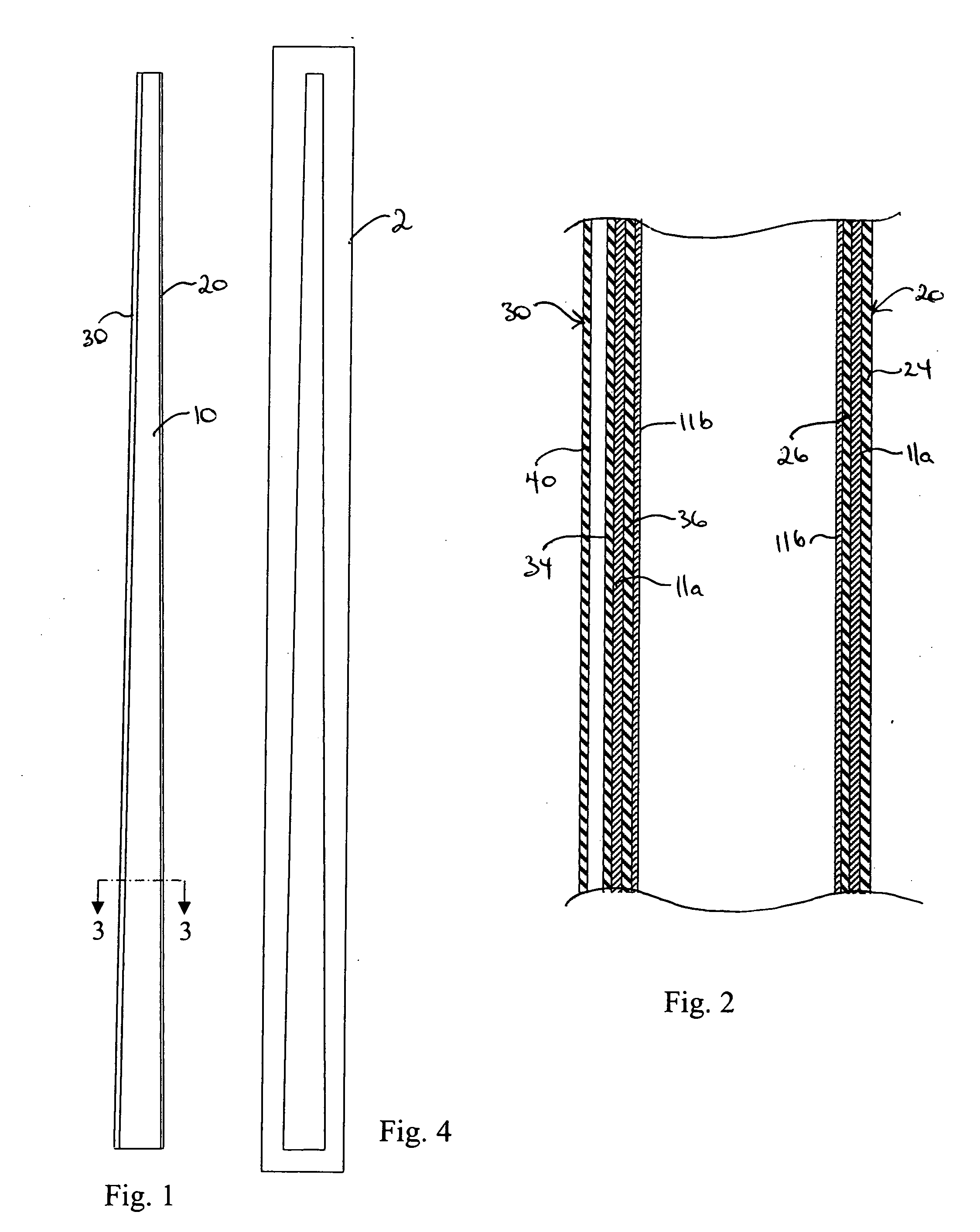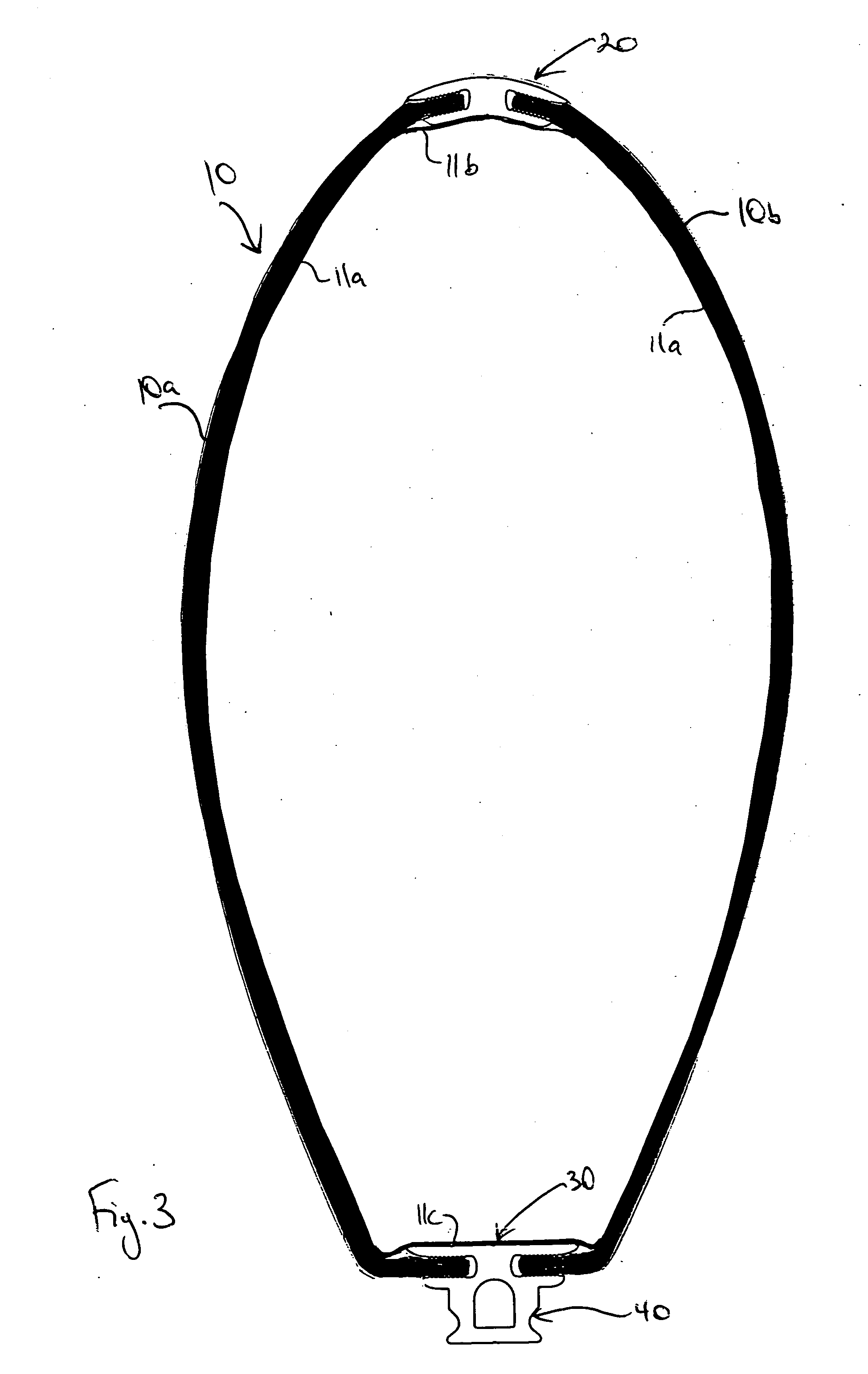Mast and method of manufacturing a structural member for a boat
a technology for boats and masts, applied in the field of boats, can solve the problems of hundreds of hours of manual labor, uneven exterior surface of masts, and high labor intensity of fabric-resin augmentation and patching/refinishing steps, and achieve the effect of reducing the likelihood of separation and being less expensive to produ
- Summary
- Abstract
- Description
- Claims
- Application Information
AI Technical Summary
Benefits of technology
Problems solved by technology
Method used
Image
Examples
Embodiment Construction
[0024]FIG. 1 illustrates a mast 10 constructed according to the invention. In the preferred embodiment the mast is formed from a carbon-graphite composite fibre fabric impregnated with epoxy resin; however it will be appreciated that fibreglass and other types of fabric-resin systems can be used to fabricate the mast halves.
[0025] The invention will be hereinafter described in the context of a mast10 according to the invention, however it will be appreciated that the structure of the mast 10, and the method of producing same hereinafter described, are equally applicable to other structural members, especially those suitable for a boat.
[0026] The mast 10 is formed from mast parts, preferably mast halves 10a, 10b as illustrated in FIG. 2. In the preferred embodiment each mast half is composed of a fabric-resin body 14. The mast halves 10a, 10b are formed to the desired size, aerodynamic configuration, and axial taper as determined by a female mold 2, an example of which is illustrat...
PUM
| Property | Measurement | Unit |
|---|---|---|
| length | aaaaa | aaaaa |
| thickness | aaaaa | aaaaa |
| deflection resistance | aaaaa | aaaaa |
Abstract
Description
Claims
Application Information
 Login to View More
Login to View More - R&D
- Intellectual Property
- Life Sciences
- Materials
- Tech Scout
- Unparalleled Data Quality
- Higher Quality Content
- 60% Fewer Hallucinations
Browse by: Latest US Patents, China's latest patents, Technical Efficacy Thesaurus, Application Domain, Technology Topic, Popular Technical Reports.
© 2025 PatSnap. All rights reserved.Legal|Privacy policy|Modern Slavery Act Transparency Statement|Sitemap|About US| Contact US: help@patsnap.com



